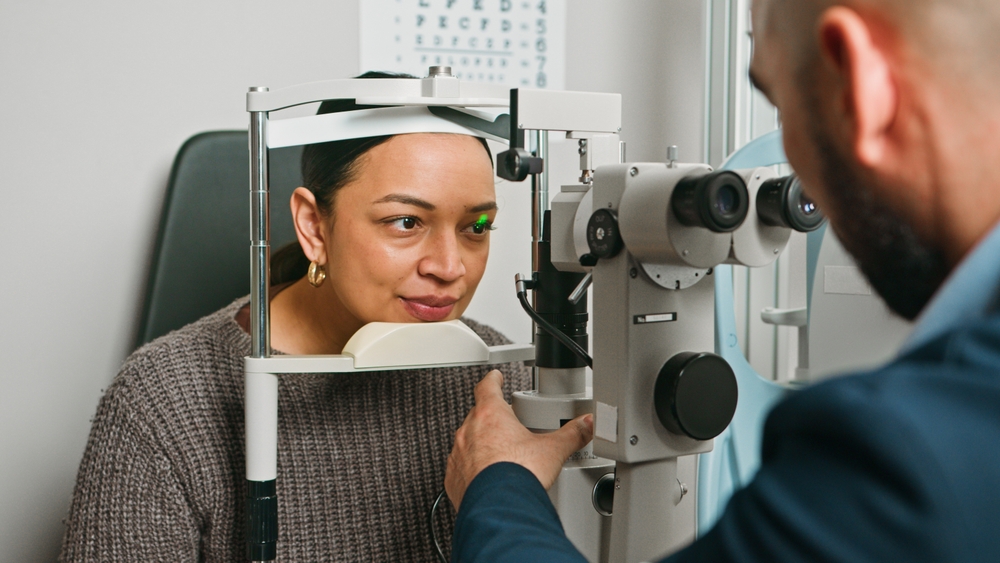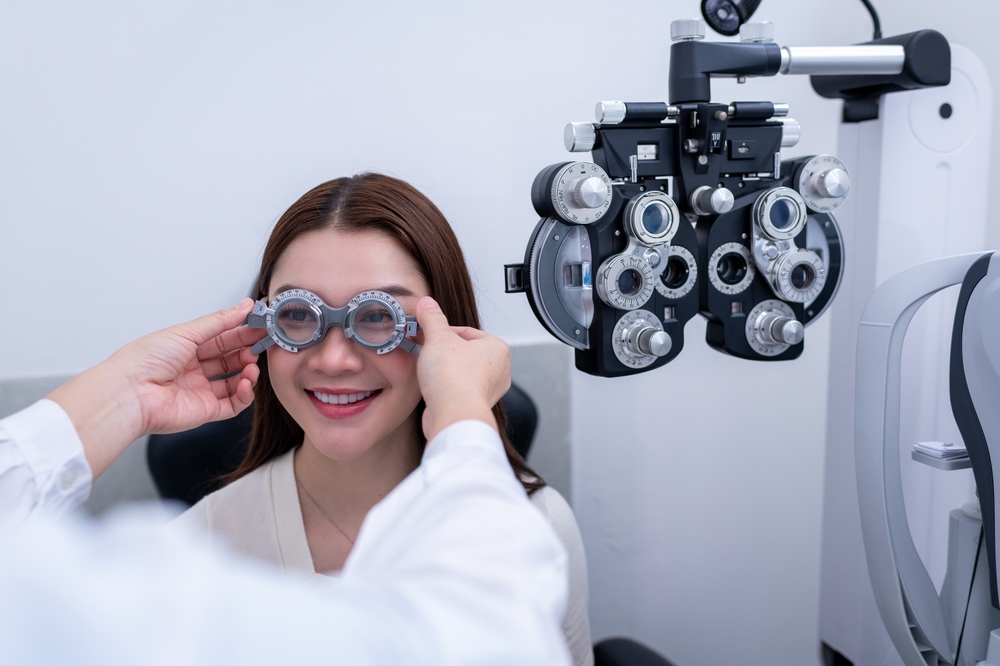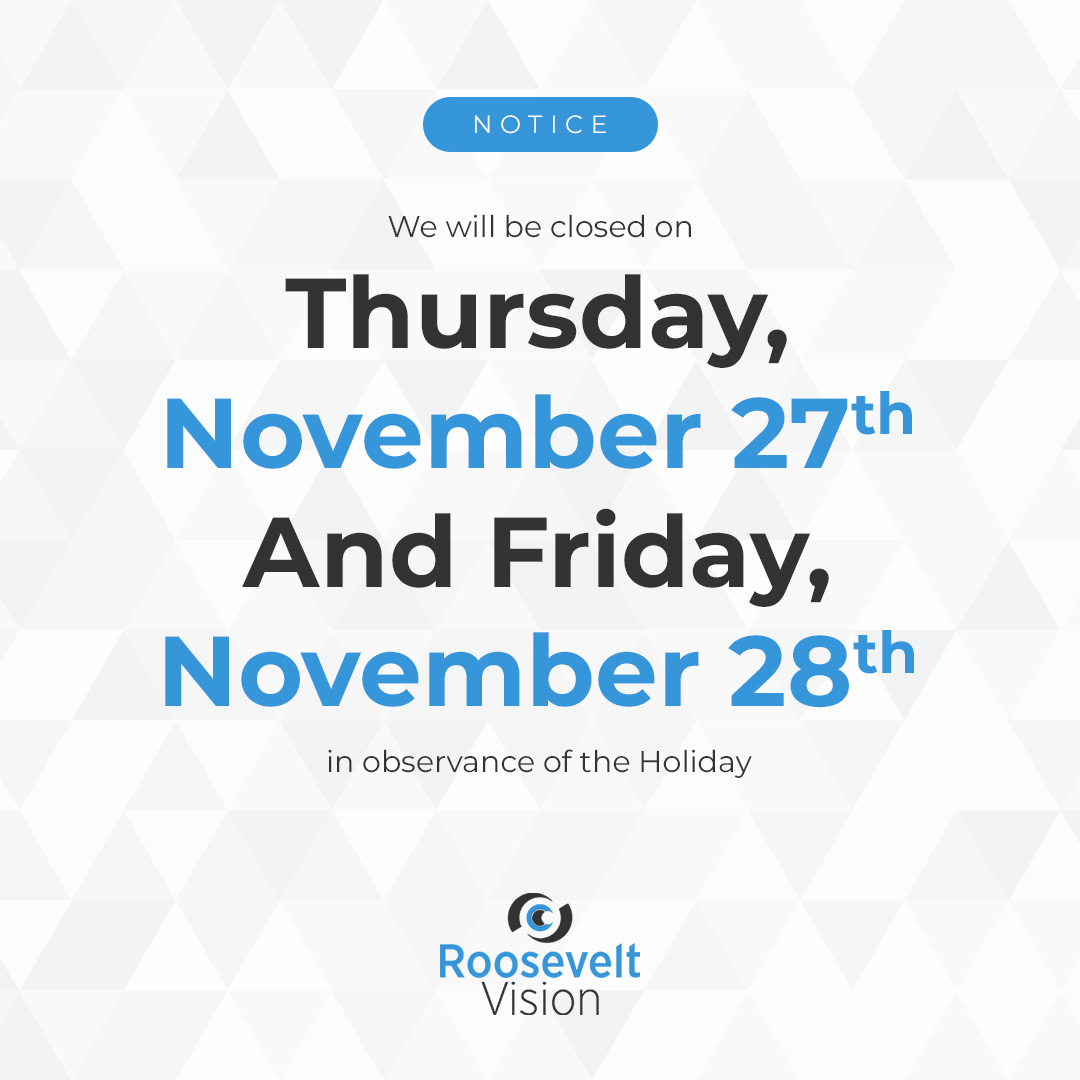Roosevelt Vision Blog
Learn more about optometry care in our blog!

Myopia has become one of the most common vision conditions affecting children today. One of the most exciting innovations to emerge is the Essilor Stellest™ lens, recently approved by the FDA for use in children ages 6 to 12. Already proven internationally since 2020, these lenses represent a major leap forward in slowing the progression of myopia.

Dry eye disease affects millions of people and is often caused by the eyes’ inability to produce enough quality tears. For many, over-the-counter drops only provide short-lived relief. TRYPTYR (acoltremon ophthalmic solution) 0.003% represents a new approach. Instead of simply adding moisture, this prescription treatment helps stimulate the eye’s own natural tear production, targeting the underlying dysfunction that leads to discomfort.

It’s common for adults to think that if they can see clearly, they don’t need to schedule an eye exam. However, vision is only part of the bigger picture when it comes to eye health. A comprehensive eye exam is about more than just updating your glasses prescription - it’s about protecting your long-term vision and overall health.

For those who suffer from migraines, the pain, light sensitivity, and disruption to daily life can feel overwhelming. While medications are often the first line of defense, they don’t always work for everyone and may come with side effects. One of the most promising options we offer is Avulux® lenses.

Blurry vision is a common symptom that many people experience from time to time. Often, it can be linked to minor issues such as digital eye strain, dry eyes, or a change in your glasses prescription. However, there are times when sudden or severe blurry vision may signal a more serious medical condition that requires urgent attention. Knowing when to seek immediate care can make a critical difference in protecting your sight.

Myopia, or nearsightedness, is one of the most common vision issues in children and young adults today. It causes distant objects to appear blurry while nearby objects remain clear. While glasses or contact lenses can correct the vision problems associated with myopia, many people don’t realize that if left unmanaged, myopia can lead to more serious eye health issues over time. Taking steps to control it early can help protect long-term vision and prevent complications later in life.

When it comes to your vision, there’s no substitute for care that’s truly personalized. Your eyes are unique, and so are your lifestyle, health history, and long-term needs. At Roosevelt Vision, we believe personalized eye care is the foundation of clear, comfortable vision - now and for years to come. From your first exam to selecting eyewear and monitoring your eye health over time, individualized care makes all the difference.

As summer winds down and the back-to-school season approaches, college students are gearing up for packed schedules, late-night study sessions, and long hours in front of digital screens. Whether you're diving into textbooks, streaming your favorite shows, or switching between the two, your eyes are working harder than ever, and that makes a comprehensive eye exam more important than you might think.

When you think of summer sun protection, you might picture sunscreen and hats, but your eyes need protection as well. Ultraviolet (UV) rays from the sun can cause lasting damage to your vision, even when it is cloudy or during brief periods of exposure. Over time, this invisible threat can lead to a variety of serious eye conditions.

When it comes to protecting your eyes from the sun, not all sunglasses are created equal. At Roosevelt Vision, we carry premium sunglasses with upgrades like custom tints, polarization, and full spectrum UV protection to help keep your vision sharp, comfortable, and protected throughout the year.



















